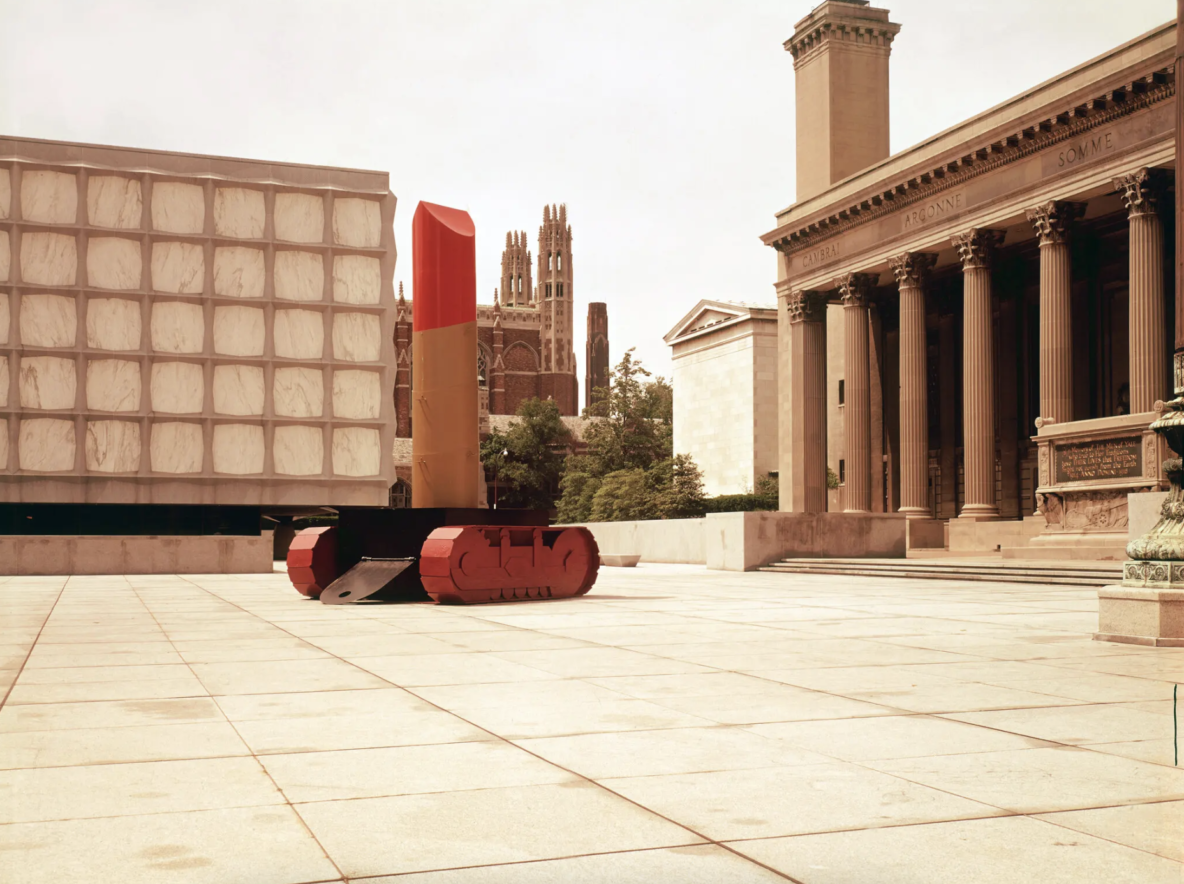Claes Oldenburg BA ’50, the Swedish-born American Pop artist known for his monumental sculptures of everyday objects, died on Monday at his home and studio in the SoHo section of Manhattan. He was 93.
In the Yale Community, Oldenburg is perhaps best known for the “mysterious” appearance of his anti-war sculpture “Lipstick (Ascending) on Caterpillar Tracks,” which was placed in Beinecke Plaza during the spring of 1969 before being “officially accepted by the [Yale University] Art Gallery and placed on indefinite loan to Morse College” in the fall of 1974.
As Yale library research archivist Judith Schiff writes, “Lipstick” was an “enigmatic artwork—a gigantic “lipstick” that stood 24 feet tall and appeared to be mounted on the body of a tank… Its presence in front of the World War I Alumni War Memorial inspired some and infuriated others, and it quickly became a focal point for antiwar demonstrations and student rebellion.”
Though the design was initially commissioned by the editors of the Yale Alumni Magazine, a project which ultimately fell through, “it was quickly adopted by the editors of the Yale architectural journal Perspecta.” The project moved forward and was kept secret from Yale authorities. May 15, 1969 marked the assembly of the sculpture in Beinecke Plaza, and “Lipstick (Ascending)” became Oldenburg’s first monumental public sculpture to be completed.
The sculpture had anti-war significance given the Vietnam War protests already occurring around campus. When, for the first time, female undergraduates, entered Yale’s campus in the fall of 1969, the sculpture, with its contrasting feminine and masculine elements, took on significance as a symbol for female coeducation.
Read more about Oldenburg’s prolific life as a Pop Art sculptor in this New York Times Obituary.
Read Judith Schiff’s original February 2000 article in the Yale Alumni Magazine here.
Credit: Clase Oldenburg, “Lipstick (Ascending) on Caterpillar Tracks,” (1969). Photo: The Oldenburg van Bruggen Studio.

